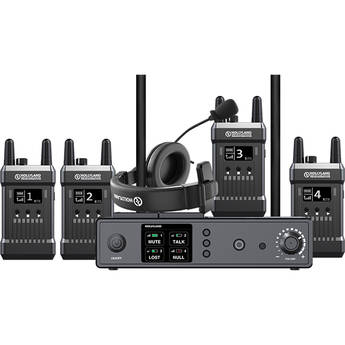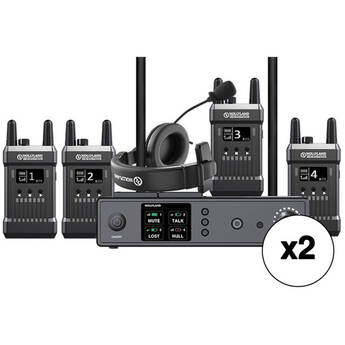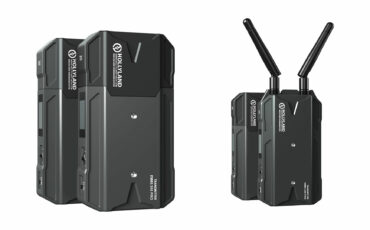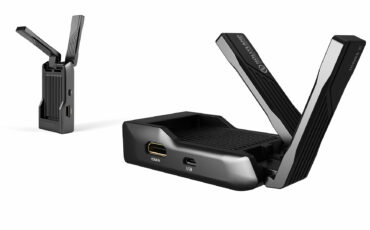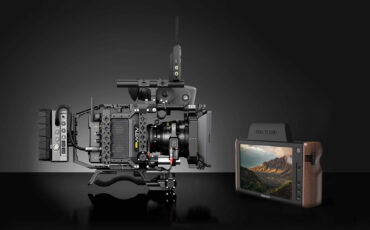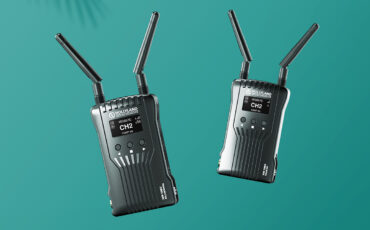“I can hear you, can you hear me?” – Hollyland Mars T1000 Intercom Review
It’s time to review something that we usually rarely deal with: an intercom system! To be more specific, it’s the Hollyland Mars T1000 Intercom – a digital full-duplex wireless system for up to 5 people, so theoretically perfect for a small set. Let’s take a closer look!
Intercom Systems on Set – a Nuisance or an Asset?
On many larger film sets, especially commercial productions, intercom systems are standard operating procedure – the AD and producers will communicate with their PAs on a channel, and the gaffer will talk to their electricians on another channel. Nevertheless, even on the most modern sets, we often see old systems use that suffer from acoustic noise, or bad sound quality in general. It’s not the priority of many production companies, but it can create quite some annoyance among the crew if it doesn’t work properly, so many resort to using their mobile phones instead. That’s not how it has to be if better, noise-free (digital) systems would be used.
On the other hand, on smaller sets, there usually are no intercom systems in use. Either because the production company thinks it doesn’t fit the kind of production (e.g. a small documentary crew of 5 people, which I find myself working in quite often) because of either cost or the practicality of using such a system (many require AC power). Mobile phone calls are considered “good enough” even though something else would be much more practical in many cases.
So when I heard of the Hollyland Mars T1000 Intercom System, I was intrigued: A digital system that seems small and affordable enough to be used even on smaller sets, with a promised “Carrier-Grade Voice Quality”, that sounded actually very interesting.
How to Start a Podcast
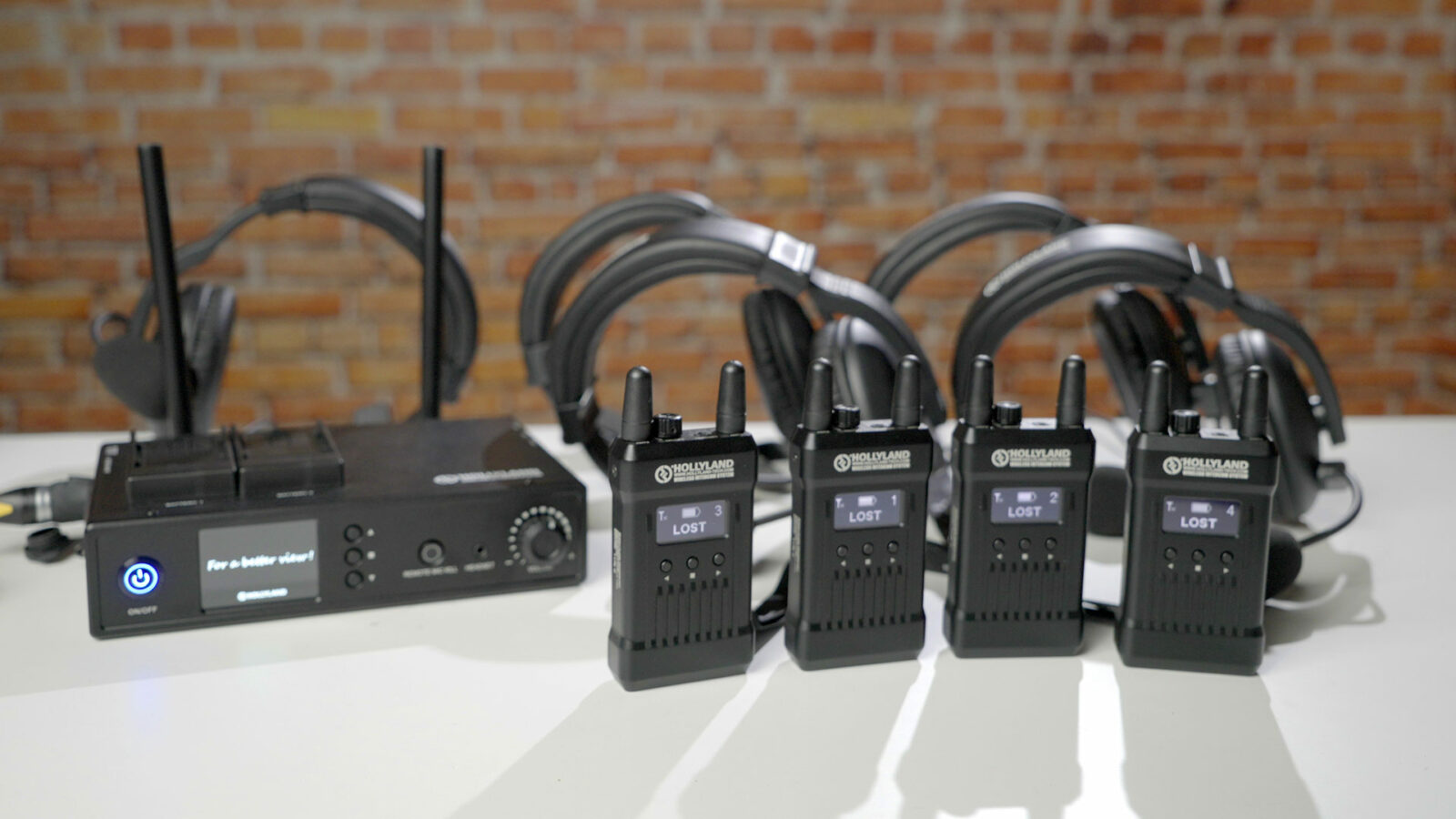
What’s in the Box of the Mars T1000? Contents and Built Quality
When I opened the box, I was surprised how much was included with the Hollyland Mars T1000 Intercom System: The base station plus 4 belt packs, and 5 headsets. Two antennas for the base station plus a spare antenna, plus spare headphone shells for all 5 headsets, and satchels for all of them too. A 4-pin XLR power adapter for the base station, and NPF-style (Sony) battery mount on top of the base station. Really a very comprehensive setup, and nothing that was missing, with spare parts I didn’t actually expect. And on top of all, all that from a company (Hollyland) that so far is best known for wireless video systems, an unexpected new product!
Belt packs – Rugged with built-in battery
In terms of built quality, even more surprising: The belt packs are made of solid aluminum, with built-in antennas. For me, the belt packs are the most crucial part of intercom systems because they really need to be able to take a beating – they get tossed around, fall to the ground, and so on – and the Mars T1000 belt packs even come with built-in antennas, which look like they can’t easily break off (always a concern on devices where the antennas are sticking out!).
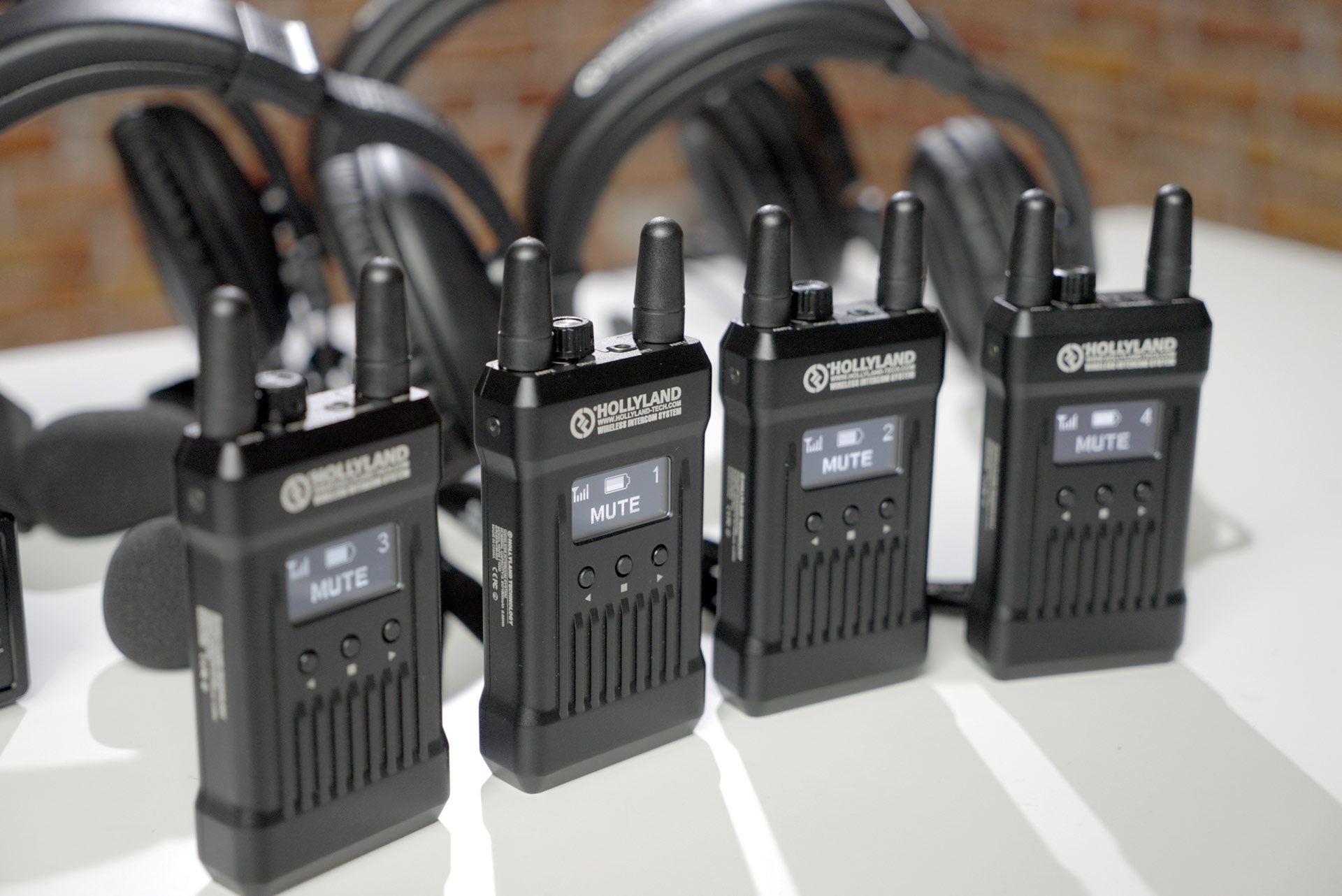
The battery is built in … now this is good and bad of course, for one it’s good for ruggedness as it can’t simply fall off (yes, we all know the intercom systems where that happens frequently!!), yet it means that you can’t simply swap to a full battery when the built-in one is drained. However, it lasts around 8 hours when fully charged (that is, 8 hours of continuous use without switching it off in between!), and taking normal usage into account, that means that you should be able to last through a full shooting day. Still not ideal, but for this type of system – let’s call it a “prosumer intercom system” – I think it’s the right move the build the battery into the belt packs.
Base Station – Solidly built, 4 USBs for charging
The base station, likewise, is made of solid aluminum. It also looks like it’s very durable, but it will usually live in the video village or wherever the director or AD sit. The base station itself has a headphone jack as well for one of the headsets. Both the base station and the belt packs have OLED screens for settings, and on the base station there are some very basic settings that you can change, for example adjust for a loud or more quiet surrounding.
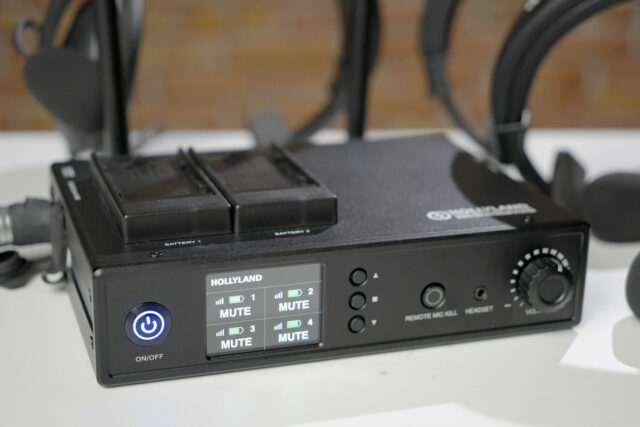
The base station has 4 USB-type-A ports on one side which are intended to be used to charge the four belt packs with the included 4 USB-A-to-USB-C cables. Very nice idea indeed, no need for an additional USB charger with this system. There’s also an additional USB-C port for firmware updates next to those 4 ports.
You can even daisy-chain a second basestation via Ethernet in order to have up to 10 people connected with two Mars T1000 Intercom Systems. Smart move that makes your small system somewhat scalable (though 10 people is the maximum, you can’t add a third system to a network).
Powering the Mars T1000 Base Station – AC or batteries
The Mars T1000 base station can either be powered with a 4-pin XLR cable (included) or through NPF-style batteries, which, as already mentioned, is a great idea that makes you very independent with it. You can literally take this system to the top of a mountain and you’ll still be able to communicate with your crew without the need for AC power or some other funky battery improvisation. We tested this and it works like a treat – I applaud Hollyland also for using the NPF standard which guarantees that those batteries are cheap to buy and also easy to get from anywhere, as it’s such a widespread standard.
Headsets
One thing that constantly annoys me about many other intercom systems is the fact that the headsets often hurt or don’t sit on my head perfectly. Nothing is more distracting than a headset that you have to wear all day long (e.g. on a multicam production, connected to the director), which gives you a headache because it’s pressing against your head, and there is nothing you can do against it.
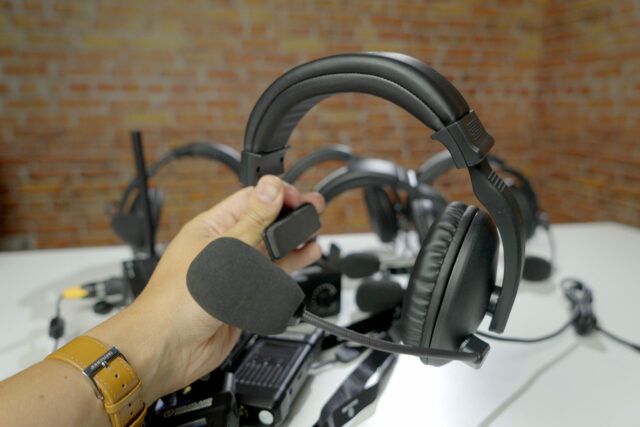
Luckily, I find the headsets that Hollyland is shipping with the Mars T1000 to be extremely comfortable. I have a relatively large head and it fits me very well, though of course it can be adjusted to different head sizes. The headphone shell surrounds your right ear entirely, which is great – there is no pressure on your ear whatsoever, which makes wearing the headset for an extended period of time a non-issue. Also, the headset in general is very lightweight, it doesn’t feel like a full headset when you are wearing it. The microphone in front of your mouth can be adjusted easily to any needed position. I can only recommend to wear it as close to your mouth as possible though, in order to guarantee good audio quality.
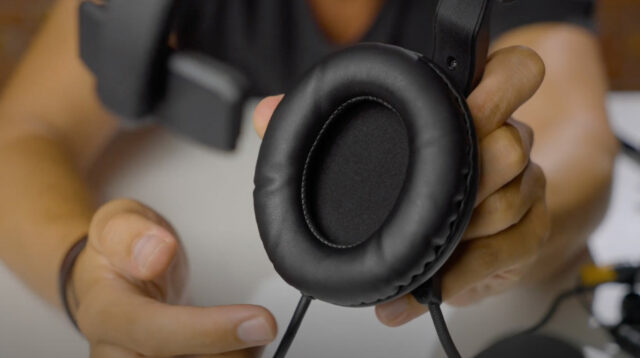
Frequency band
In terms of frequencies, there is nothing you can really change (that I found) – the Hollyland Mars T1000 system is operating in the 1.9GHz band, which is the upper limit of the frequency band used by GSM systems. This means it’s operating on the same wave lengths as mobile phones, which can create interference in busy areas (say, if you are operating the system at an event with many people around – okay, let’s assume that these types of events will start to happen again after 2020 is over ….). It’s something you need to be aware of and you should plan accordingly before you end up on set and you can’t use it because of interference.
Sound quality
In terms of audio quality, communicating using the Mars T1000 sounds pretty much like having a mobile phone call over a normal cellular connection. The audio quality isn’t as clear as a VOIP call (like, let’s say, Facetime Audio or a WhatsApp call), but like a normal GSM call.
There seems to be a little more acoustic noise than during normal mobile phone communications, but it’s negligible. When the connection is there, the quality is quite decent.
What I did find in louder environments, sometimes it seems like I had the volume turned up all the way in order to understand my counterpart. This might have to do also with how close the microphone of the other person is to their mouth – these are close mic headsets, so people should be advised to have the microphone almost touch their lips when talking. Just be aware to change the foamy and disinfect the headset before it changes persons.
When the connection does break up, the audio is really unusable – typical behaviour for a digital system. This is pretty much like being in an area with weak phone coverage, it will sound just like that: at first, you will hear only snippets of what your counterpart is saying, and then the connection is completely gone. Sometimes there is a hiss noise before the display says “LOST”. And that actually brings us to the next point: Reach.
Reach and connection
Hollyland claims 1000 feet (approx 300 meter) range of the Mars T1000 system. Of course that is only true for line-of-sight connections. In order to test this – you can see it in the video above – I left the studio and walked down the street, at first with the basestation still in the studio. It kept the connection all the way down the stairs and then until I was around 50 meters away from the office, then it broke up. Not a great range but “good enough” for such a system, considering there were very thick and old walls between me with my belt pack and the basestation.
The next test was a line-of-sight test, and our “gear wizard” Florian stayed by the open window with the basestation and I walked down the street. What’s noteworthy is that it’s clear that even a car or an electric scooter can cause some interference when passing by. Nevertheless, I was able to get quite close to the claimed 300 meters of distance, maybe it was around 250 meters, before the connection was interrupted. What’s strange is that when getting closer to the basestation again, it doesn’t necessarily automatically seem to reconnect to it. It helps to turn the belt pack off and on again, because it seems like it’s trying “harder” to reconnect then. Sometimes the connection jumped from no connection to a connection with 3 bars just by doing that, when walking back only a few meters. But we all know how “funky” mobile phone reception can be, it’s clear that this is the same kind of behaviour.

Conclusion – Mars T1000 Intercom
I can recommend the Hollyland Mars T1000 Intercom System to people who are after an affordable and durable communication solution for small sets and small teams. Range is an issue, so just be aware that it’s not going to work in a radius of a kilometer or so, but it doesn’t have to work that far – even inside buildings, as long as people are not too far apart, it should do its job just fine. Durability is great and I can see that thing take a beating, I even think it’s suitable for rental, should you decide to rent it to other people. The price might seem not that low when you see it the first time, but it’s actually quite affordable compared to similar solutions in the market. I definitely plan on using it on many of my upcoming shoots when communicating in a small crew. Thumbs up!
Hollyland is actually running a promotion on the system until the end of September – normal price is $1,800, now it’s just over $1,500. Please support us in making more reviews by using our links below! Thank you.
Are you using intercom systems like the Mars T1000 on your productions? Which ones? Do you like using them or are you considering to buy one? Let us know in the comments below!
